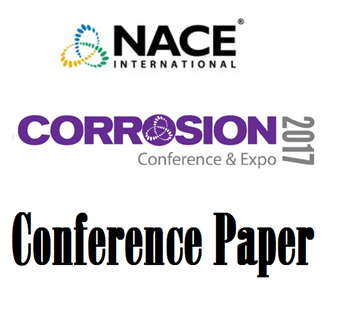Search
Individual Conference Papers
View as
Sort by
Display
per page
Electrochemical And Morphological Investigation Of Corrosion Behavior Of Carbon Steel In A Supercritical CO2 Environment With Presence Of H2S.
Product Number:
51322-18005-SG
Publication Date:
2022
$20.00
Electrochemical Assessment Of The Influence Of Temperature On The Pitting Corrosion Reistance Of Metallic Materials In Brines
Product Number:
51322-17738-SG
Publication Date:
2022
$20.00
Electrochemical Behavior of the Austenitic Stainless Steel Susceptibility to Sulfide Stress Cracking in H2S Containing Brines
Product Number:
51319-12854-SG
Publication Date:
2019
$20.00
Electrochemical Behavior Of Transmission Pipeline Steels In Supercritical Carbon Dioxide
Product Number:
51322-17592-SG
Publication Date:
2022
$20.00
Electrochemical Behavior Under Artificial Seawater and Intergranular Corrosion Performance of 6XXX Aluminum Alloys Series
Product Number:
51320-14620-SG
Publication Date:
2020
$20.00
Electrochemical Corrosion Analysis Of Stainless Steels In LALM Pyrolysis Bio-Oil With Organic Corrodents
Product Number:
51322-17759-SG
Publication Date:
2022
$20.00
Electrochemical Corrosion Behavior of Carbon Steel With and Without Residual Elements
Product Number:
51320-14245-SG
Publication Date:
2020
$20.00
Electrochemical Corrosion Behaviors Of Nuclear Waste Package Materials
Product Number:
51321-17009-SG
Publication Date:
2021
$20.00
Electrochemical Corrosion Evaluation Of Boral® Panels From The Decommissioned Zion Nuclear Power Plant Spent Fuel Pool
Product Number:
51321-16548-SG
Publication Date:
2021
$20.00
Electrochemical Corrosion Studies of Different Alloys and Cement Lining Material of Water Transmission system
Product Number:
51323-19203-SG
Publication Date:
2023
$20.00
Electrochemical Crack Size Effect in Stress Corrosion Cracking and Corrosion Fatigue
Product Number:
51317--8853-SG
ISBN:
8853 2017 CP
Publication Date:
2017
$20.00
Electrochemical Deposition of Aluminum-Based Coatings from Aqueous Systems
Product Number:
51220-297-SG
Publication Date:
2020
$20.00












